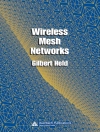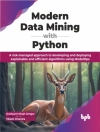This book provides a comprehensive exploration of the exciting intersection between technology and biology and delves into the principles, applications, and future directions of Io T in the realm of bioelectronics; it serves as both an introduction for those new to the field and as a detailed reference for experienced professionals seeking to deepen their knowledge.
The rapid convergence of technology and biology heralds a new era of evolution in the Internet of Things (Io T), a transformative force enabling interconnected devices to communicate and operate with unparalleled synergy. This is particularly true in the groundbreaking field of bioelectronics, where the fusion of biological systems with electronic devices and Io T is reshaping the landscape of bioelectronics, promising to open up new frontiers in healthcare, diagnostics, and personalized medicine.
This timely book explores the numerous ways in which Io T-enabled bioelectronic devices are used to monitor and enhance human health, from wearable sensors that track vital signs to implantable devices that can communicate with healthcare providers in real time. One central theme of this book is the transformative impact of Io T on healthcare. By enabling continuous, remote monitoring of patients, Io T technologies are not only improving the accuracy of diagnostics but also making healthcare more accessible and personalized. The book also addresses the critical issues of securing health records on the internet, which are of paramount importance as we increasingly rely on interconnected devices to collect and transmit sensitive health information. Additional attention is paid to the future directions of Io T in bioelectronics and the integration of innovative areas, such as artificial intelligence, machine learning, and big data analytics, in driving the development of ever more sophisticated and capable bioelectronic systems.
Audience
The target audience includes professionals, researchers, academics, and students involved in various fields related to bioelectronics, Io T, healthcare, biotechnology, engineering, and related disciplines.
Tabla de materias
Preface xiii
Acknowledgement xv
1 Io T-Based Implant Devices in Humans/Animals for Therapeutic Reasons 1
Chetankumar Kalaskar
2 Io T and Nano-Bioelectronics for Target Drug Delivery 17
Ambikesh Soni, Pratiksha Singh, Gagan Kant Tripathi and Priyanka Dixit
3 Healthcare and Hygiene Monitoring Using Internet of Things (Io T) Enabled Technology 41
J. Sandhya and Lakshmi Sandeep
4 Self-Powered, Flexible, and Wearable Piezoelectric Nanocomposite Tactile Sensors with Io T for Physical Activity Monitoring 69
Arjun Hari M. and Lintu Rajan
5 Securing Electronic Health Records (EHRS) in Internet of Things (Io T)-Based Cloud Networking Using Elliptic Curve Cryptography (ECC) with ECIES Algorithm 89
J. Shyamala Devi and Selvanayaki Kolandapalayam Shanmugam
6 2D Photonic Crystal Nano Biosensor with Io T Intelligence 107
Balaji V. R., Jesuwanth Sugesh R. G., Sreevani N.R.G., Shanmuga Sundar Dhanabalan, T. Sridarshini and Gopalkrishna Hegde
7 Portable Io T Smart Devices in Healthcare and Remote Health Monitoring 125
Boopathi Raja G., Parimala Devi M., Deepa R., Sathya T. and Nithya S.
8 Pioneering Implantable Io T: A New Era of Precision Medicine for Humans and Animals Unveiling the Future of Medicine Through Implantable Technology 145
Md. Afroz, Emmanuel Nyakwende and Birendra Goswami
9 Enhancing Patient Safety and Efficiency in Intravenous Therapy: A Comprehensive Analysis of Smart Infusion Monitoring Systems 171
Krishna Sreekumar, T. Punitha Reddy and Boppuru Rudra Prathap
10 Portable Io T Smart Devices in Healthcare and Remote Health Monitoring – Abnormality Detection through Personalized Vital Health Signs Using Smart Bio Devices 201
Poorani Marimuthu, C. Christlin Shanuja and Aparna N.
11 Fuzzy Logic-Based Fault Diagnosis for Bioelectronic Systems in Io T 219
Yogeesh N
12 Portable and Automated Healthcare Platform Integrated with Io T Technology 251
Preetham Noel P. and Kishorekumar R
13 Portable Io T Devices in Healthcare for Health Monitoring and Diagnostics 263
Sindhu Rajendran, Aryan Porwal, Kumari Anjali, Anvaya and Anuradha R. J.
14 Io T-Enabled Analysis of COVID Data: Unveiling Insights from Temperature, Pulse Rate, and Oxygen Measurements 297
Justin John, Kukatlapalli Pradeep Kumarand Hari Murthy
Index 311
Sobre el autor
Hari Murthy, Ph D, is a faculty member in the Department of Electronics and Communication Engineering, CHRIST (Deemed to be University), Bengaluru, India. His doctoral thesis from the University of Canterbury, New Zealand was on novel anticorrosion materials. He has published several articles in international journals and conferences as well as edited “Novel Anti-Corrosion and Anti-Fouling Coatings and Thin Films” with the Wiley-Scrivener imprint (2024).
Marta Zurek-Mortka, Ph D, is a senior specialist in the Department of Control Systems, Lukasiewics Research Network, Institute for Sustainable Technologies, Radom, Poland. She obtained her doctorate in electrical engineering from the University of Technology and Humanities Kazimierz Pulaski in 2020. She is an author and co-author of more than 30 publications in SCI journals, as well as a co-author of four patent applications. Her research interests include electromobility, renewable energy, power electronic converters for electromobility, and renewable energy sources.
Vinay Jha Pillai, Ph D, is an assistant professor in the Department of Electronics and Communication Engineering, CHRIST (Deemed to be University), Kengeri Campus, Bangalore, India. His primary research is in the early detection of breast cancer using optical imaging and holds two patents related to the subject. He is also exploring the domain of sensors for extracting coating parameters, especially for thermal barrier coatings which have a wide application in the field of corrosion and biofouling inhibitors.
Kukatlapalli Pradeep Kumar, Ph D, is an associate professor and data science program coordinator at Christ University, Bangalore, India. He has published multiple publications in journals and conferences. His areas of interest include data science, information security, data provenance, and multiparty secret sharing.












